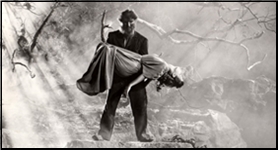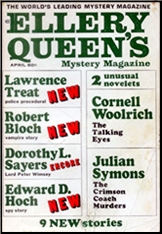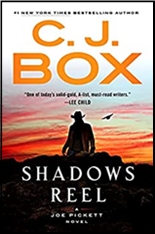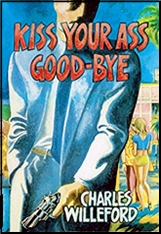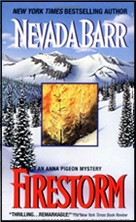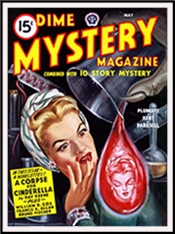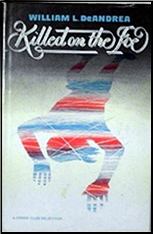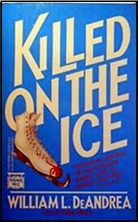REVIEWED BY DAVID VINEYARD:
DAVID McDANIEL – The Man from U.N.C.L.E. #13: The Rainbow Affair. Ace G-670, paperback original, 1967.
Some books are great. They are works of art, original, inventive, they speak to the reader as both entertainment and art. Some are tragic, some comic, some make you think, some make you shiver.

And once in a while, maybe most of the time, a book is just a workhorse, a perfectly predictable escape from the world for an hour or so. Most movie and television tie-ins and novelizations fall into that perfectly respectable category.
Created by Sam Rolfe and Ian Fleming over drinks in a New York hotel room, The Man From U.N.C.L.E. television series ran four seasons from 1964 to 1968. It starred Robert Vaughn as Napoleon Solo (name taken from a minor villain in Fleming’s Goldfinger) and David McCallum as Russian Ilya Kuryakin, both working under donnish Alexander Waverly (Leo G, Carroll post Topper) for an international crime fighting group with secret headquarters in New York entered through Del Floria’s tailor shop, the United Network Command for Law Enforcement.
And if you happened to substitute the word Nations for Network in your head it wouldn’t terribly upset Fleming, Rolfe, or producer Norman Fell however much they might deny it.
The two agents were most often pitted against THRUSH (which doesn’t seem to stand for anything) a conspiracy of spies, saboteurs, assassins, and monomaniacs all at each other’s throats and weekly scheming to behave horridly. Think Fleming’s S.P.E.C.T.R.E. without the founding genius of Ernst Stavro Blofied or a slightly more competent CHAOS.
Most episodes followed the format of an ordinary citizen being recruited by Waverly to assist Solo and Kuryakin in foiling THRUSH, meaning at least two name guest stars in every episode, and when the series hit that meant some fairly recognizable faces and names passed through each week on NBC, including William Shatner (in an episode with Leonard Nimoy as a bad guy), Robert Culp, George Sanders, Victor Borge, Jack Palance, Joan Collins, and many others.
For a while stars vied to appear on the series as they would on Batman a season or so later. A few episodes of the series were even fixed up and released as theatrical movies.
The first season was in black and white, and by far the truest to the original idea, the next three seasons were in color and grew increasingly playful though the final season did try to reverse the trend.
Designed to cash in on the James Bond craze and with a nod to Doc Savage (which started reprints that same year) from the pulps, the series created a craze of its own, with more merchandise than even the most devoted fan could collect without a warehouse, and a brief golden age of Television spy series that reached its high point with Sheldon Leonard’s I Spy (also on NBC) and Mission Impossible over on CBS, not to forget Get Smart.
Magazines, coloring books, lunch boxes, toy guns, play sets, your own U.N.C.L.E. brief case,comic books, a spin off series The Girl From … with Stephanie Powers as April Dancer (her name another Fleming contribution) and Noel Harrison as Mark Slade, replete with its own magazine, books, comics etc. There was also a two year run of a digest with a monthly novel written by Robert Hart Davis who was mostly Dennis Lynds, but sometimes John Jakes and Bill Pronzini, and twenty three original tie-in novels from Ace Books by the like of Michael Avallone, Harry Whittington, and others followed.
Among those Ace books, with due deference to everyone who wrote them, there is little doubt that the best of the series (certainly the most, seven of the twenty three and an unpublished twenty fourth meant to close out the book and television series) were penned by David McDaniel, who came as close as any writer can to capturing the unique quality of a different media. As Carl Barks was the Good Duck Artist on Dell Comics Donald Duck and Uncle Scrooge titles, McDaniel was the good U.N.C.L.E. writer, or at least the better one.
Even for McDaniel though The Rainbow Affair, number thirteen in the series, is something special.
After a brief nod to McDaniel’s original contribution to the series, charming THRUSH operative William Baldwin, the only continuing villain in the books, we get down to brass tacks with Solo and Kuryakin none to happy that rather than international intrigue they are being sent to England to deal with a crook called Johnnie Rainbow who operates a highly successful non-violent criminal organization and so successfully Scotland Yard claims he is just a myth.
But he is a myth THRUSH is interested in, and they can ill afford to let THRUSH recruit such a competent criminal and his organization.
So, grousing all the way (McDaniel caught the by play between Vaughn and McCallum better than any of the other series writers) the two agents are off to the jolly old UK, but not before a THRUSH agent in London visits a rival of Rainbow’s to do a little recruiting on their own, an elderly Chinese gentleman.
Behind this desk sat a tall, thin Chinese, wearing robes of silk which shimmered in the candlelight. His face was unlined, but his eyes were old with ancient wisdom, and seemed oddly veiled, like those of a drowsing cat. Above an imposing brow, he wore a black skullcap with a single coral bead which indicated the rank of Mandarin. A marmoset perched on his shoulder, occasionally nuzzling his ear.
Huh?
Shades of August Derleth’s Solar Pons’ Mr. King, I presume? But in fairness this elderly Chinese has gotten around in other people’s books before.
Then Solo and Kuryakin arrive in London for their appointment at Scotland Yard.
“Solo and Kuryakin,†Napoleon said as they came in. “Here to see Inspector West.â€
“He’s occupied at the moment,†she said. “I’ll tell him you’re here.†She ticked a tab on a shiny intercom unit, and a voice answered faintly. “The men from U.N.C.L.E. are here, sir.â€
“Excellent,†said the other end. “Send them right in. Oh, see that Claude gets the latest additions to the Rollison file, will you?â€
“Certainly, sir.â€
The inner door opened and a stomach walked out, closely followed by a red-faced man carrying a bowler hat. He glanced at them sleepily as he paused by the desk, and as the secretary flipped through a drawer he unpackaged a stick of gum and engulfed it.
Solo and his partner stepped through the still-open door into a crisply furnished office which still smelled slightly of paint. Behind the desk a remarkably handsome man rose to greet them.
Wait just a minute here. Claude, the Rollison file, a handsome West? What is this, a meeting of the Thriller Magazine fan club?
Scotland Yard isn’t much help, but it does give them a lead and they promptly get captured by the Chinese gentleman from earlier, but they are soon rescued by a dapper, handsome MI5 operative in a bowler hat, expensive clothes, and carrying a lethal umbrella who soon introduces them to his willowy beautiful amateur partner a certain lethal lady.
He even reminds them Mr. Waverly was a colleague in the War working for a certain Department Zed, or as John Creasey would have it Department Z.
At this point Solo quips he hopes the Double O guy is out of the country.
It doesn’t end there either. Following leads the two split up, Ilya ending up stumbling on a heist and finding himself outnumbered four to one before a handsome chap appears out of nowhere, dispatches two bad guys with his twin throwing knives and offers Ilya a ride in his Hirondel.
No halos are seen, but they are certainly implied.
Meanwhile a local U.N.C.L.E. operative, the beautiful Joey, arrives on a motorcycle to help out Solo in the suburbs and introduces him to her maiden Aunt Jane of the steel trap mind and her paradoxical guest Father John. Seems Aunt Jane and Father John take a proprietary interest in crime and they can introduce Solo to the oldest member of their little group, a beekeeper in Sussex well over one hundred years old named William Escott…
Somehow the plot does sort itself out. Solo and Kuryakin meet and are charmed by Johnnie Rainbow who ends up a reluctant ally when THRUSH decides if they can’t have him they don’t want him as a rival, not to mention the deadly explosive ulsenite he has created to aid in his heists, they want to get their grubby thrushy hands on.
As might be expected things end explosively.
The ancient Chinese turns THRUSH down for the moment (“an old Chinese with a brow like Shakespeare, a face like Satan, and eyes of the true tiger green, lay dreaming.â€), Rainbow’s organization is in shambles and Rainbow presumably dead in his destroyed castle after saving Solo and Kuryakin, but at a dinner at Joey’s cottage with Aunt Jane they get a message…
The message read simply,
“The Rainbow comes and goes,
“And lovely is the rose
“Waters on a starry night
“Are beautiful and fair.â€
Aunt Jane read it twice slowly, and nodded. Illya said, “I believe the quotation is from Intimations of Immortality. Johnnie seems to have escaped the destruction of his castle, at any rate.â€
“Yes, I believe he has,†said the old lady. “But I was thinking there was a far, far truer line in the same stanza which he did not quote. Stanza two.†Her darting eyes looked up like those of a little girl who is called upon to recite, but she seemed to be looking at something else – something which no one could see and which none but she and a few others could remember. And she said, “‘But yet I know, where’er I go, that there hath passed away a glory from the earth.’â€
Sunlight poured into the silent dining room through a bank of lace-curtained windows facing the calm sea. A gull wheeled and screamed somewhere.
“You don’t mean Johnnie Rainbow,†said Illya softly.
“No, I don’t,†said Aunt Jane. “He is one of the last.â€
Napoleon looked from one to the other of them, and gradually the meal resumed. “He’ll start over,†said the American agent. “And next time I’ll bet he gets his elevator.â€
“Napoleon!†said Illya, scandalized. “Surely you aren’t wishing success to him. After all, he is a criminal.â€
Solo quickly and emphatically denied any partisanship, and good cheer was restored.
You can almost hear the pulsing beat of Jerry Goldsmith’s theme music.
As I said, literature it ain’t. It is pure pulp rot gut, but the distilled kind not the bathtub variety and intoxicating enough despite any guilty hangovers for enjoying it this much.
But damn if it wasn’t fun and capturing much of the feel of the best of the television series, tongue in cheek without head up another body cavity. For a fairly late entry in a series of novels based on a television series The Rainbow Affair proves to have ambitions far above its station delving into what today we call Metafiction feet first and with surprising charm.
Writers like Richard Jaccoma, Philip Jose Farmer, Michael Moorcock, Alan Moore, and Kim Newman may be more literary and inventive, but McDaniel pulls it off almost effortlessly and was there pretty early in the game.
